Reluctantly leaving the Algarve behind, the next region, Alentejo, beckoned. Having seen some stunning coastal scenery already we thought we were leaving it all behind but then we arrived at Porto Covo and realised we were wrong. We parked in a quiet motorhome aire tucked away in the little town having spent 5 minutes driving round and round in circles following the ‘autocaravanas’ signs which led nowhere, leaving us to figure out the last part of the route ourselves. Unfortunately this short delay cost us precious minutes and we couldn’t believe it when we finally got there and found a locked gate and sign saying ‘Open 9am, Closed 5pm’. It was 5.07pm!
Sitting in the cab staring at the sign shaking our heads we were just about to drive off when a man wandered into view. He pointed at the sign and pointed at his watch with a pitying look on his face and we all nodded miserably. Suddenly though, his face lit up and he pointed down the street where a car was pulling up. It seems that the receptionist driving away from work saw us driving towards the aire and had turned around to drive back and let us in. What a lovely lady! Having got access and found a spot the sun was still out and quite warm so we got the chairs out, sat back with a cuppa feeling very lucky to have been let in. We went out for a wander through the town then, along the pretty cobbled central promenade and square with whitewashed buildings with blue and red trim and colourful croquet wrapped trees. Porto Covo (translated as ‘port of the fishing net’) is a former fishing village and now a popular retreat for Lisboners who escape to the coast for the weekend. There’s a tiny little church and a little maze of streets winding around it full of very small, low rise houses. It was about 6pm by now and the town was very quiet. We were hoping to find a little local bar to pop into but none were open and the only place with people in was the pizza parlour. We didn’t walk down as far as the sea so didn’t discover the delights in store until the next morning.
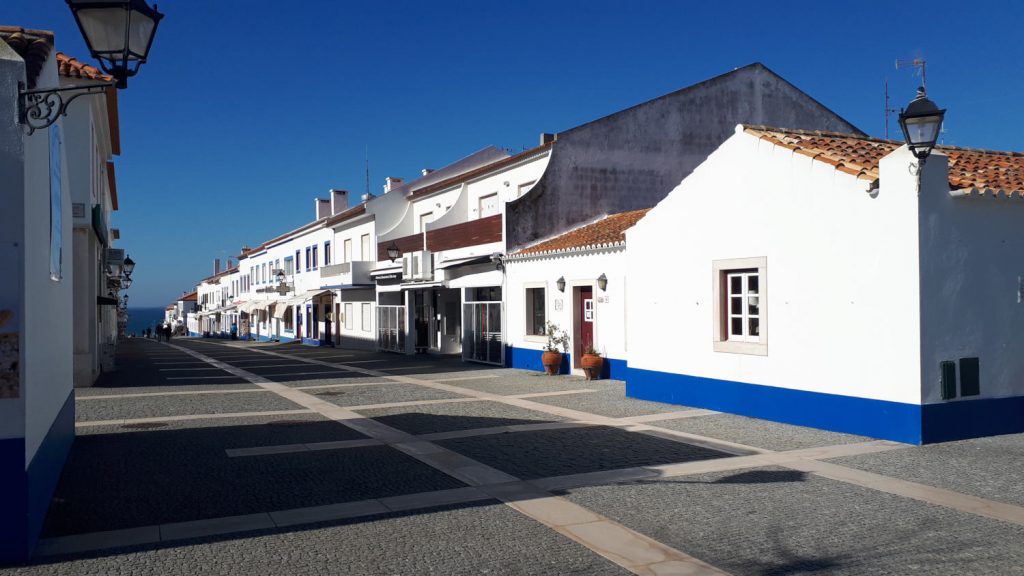
Porto Covo whitewashed town, promenade leading to the beach
The next day was bright and breezy as we headed out straight for the sea. South of the aire we immediately found ourselves gazing down on a gorgeous sheltered cove beach surrounded by high rocks on either side. Stone steps led down to the sand which was some of the softest and silkiest we’ve seen so far. The tide whooshed in and out over low black rocks and at the edge of the beach we found we could clamber over them out to a jagged rocky platform with views over to Ilha do Pessegueiro (Peach Tree Island) with its 15th century fort and Roman ruins, uninhabited but once a refuge for pirates. The rocks formed the perfect natural walkway with water rushing and gushing through narrow channels beneath our feet. Watching the waves crash in was quite hypnotic and we spent quite some time watching the ocean’s performance, playing out in front of us. We were so enthralled at one point, I just stood there while the sea foam surged in and over the rocks leaving me with soggy shoes and wet trouser legs. We continued making our way up the coast as far as we could until the gaps got too wide and then found some steps back up to the cliff top.
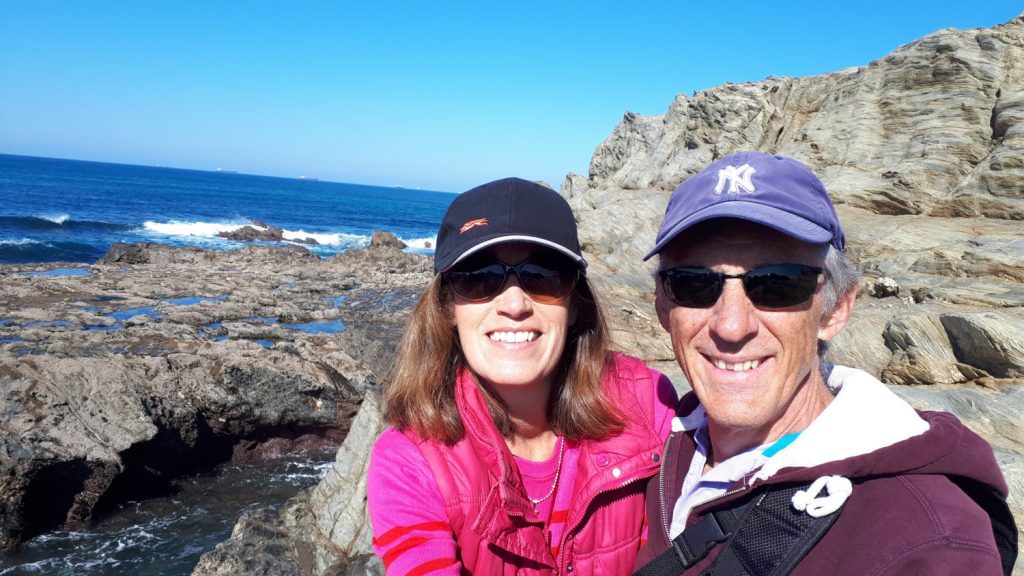
Trying not to get soaked on the rocks at Porto Covo
To the West of the aire is Praia Grande (big beach). At the top the ground is draped in ice plants, a creeper native to South Africa first brought to Europe as an ornamental plant. It is now very invasive covering a lot of the ground and smothering other native plants, but provides an attractive carpet of colour all the same, in shades of green, red and yellow a striking contrast with the vibrant blue ocean. We soon discovered another sunken cove and made our way down spotting some narrow cave tunnels leading through the rocks. Far too small to enter but intruiging all the same. There must be hundreds of hidden passages through these cliffs.
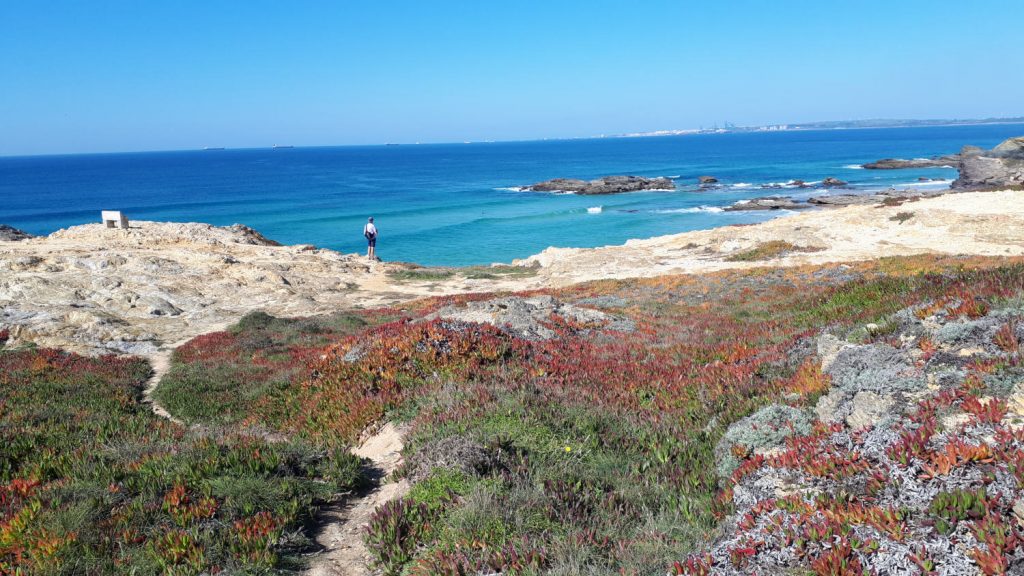
Ice plants covering the ground at Praia Grande Porto Covo
We’d remembered to pack a flask of coffee this time and at the next beach we perched next to a dramatic shard of rock, sheltered from the wind and drunk it listening to the sounds of the sea. As we strolled on further we stared down at a watery cove covered in small rocks and pebbles in every shade of green, brown, grey and black, colours straight out of nature’s perfect paintbox. It might seem strange as we love the coast so much that at this point we decided to drive inland. We’d seen such a wealth of wonders we almost didn’t want to see any more. We wanted to take it all in and absorb what we’d seen and commit it to memory. We’d like to return though and see some of the coastline we’ve missed and revisit parts that we loved.
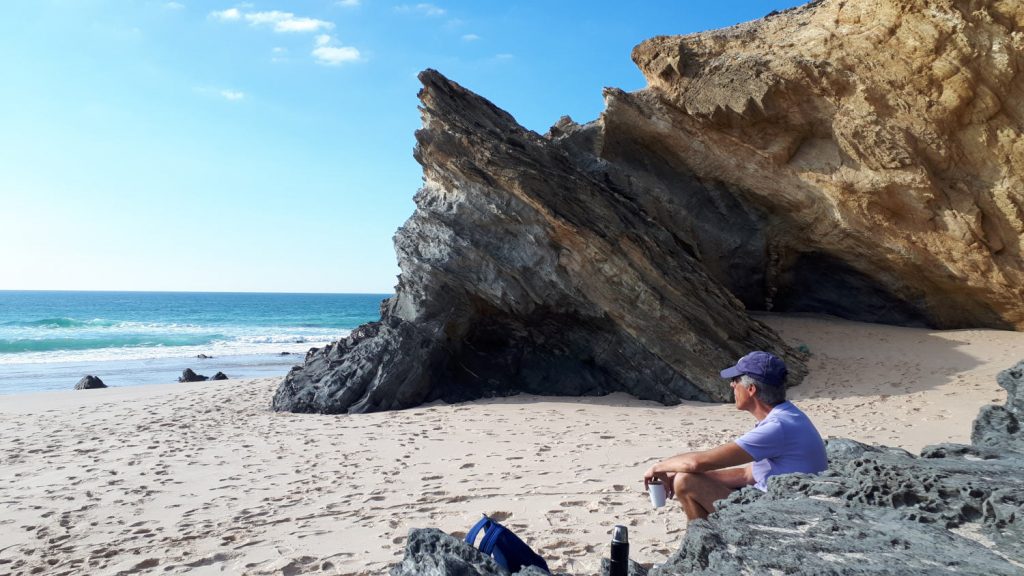
Stopping for coffee on the beach at Porto Covo
We set off towards Costa de Santo Andre where we’d found parking near the beach where we could stay for the night. We’d also seen on the map that there was a small restaurant/bar there so thought we may be able to go to that in the evening. So, following a truck heaped high with carrots we drove through the countryside stopping briefly to say hello to a cheeky looking trio of donkeys, curiously homed alongside a 3 giant ostriches! Arriving at the parking area we found a spacious car park with a couple of vans there and were just in time to walk to the beach front and see a beautiful setting sun. Sadly Martin’s Restaurant was all shut up and no-one was home. There was nothing else there so it was back to Buzz for us and a quiet night in.
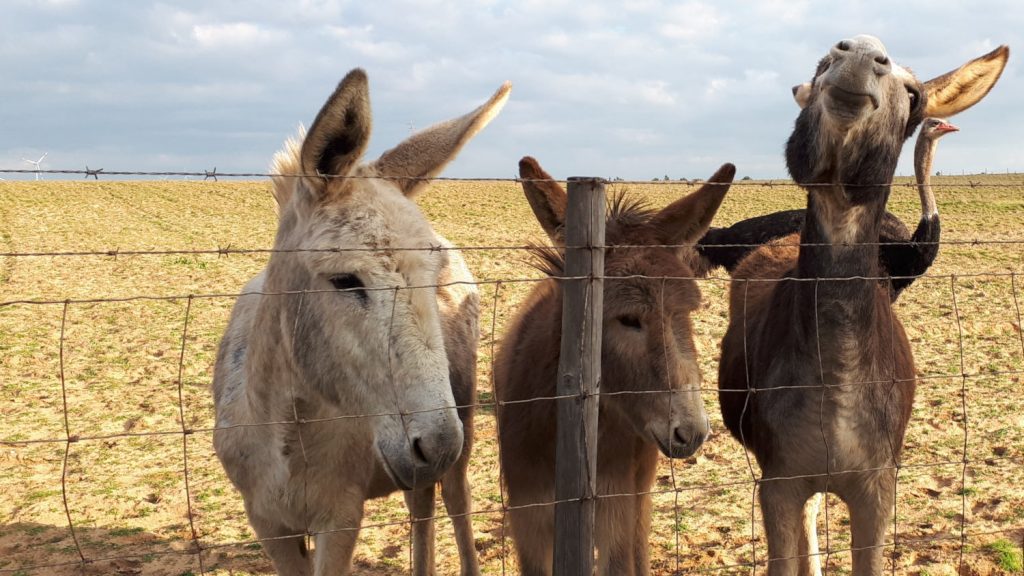
A donkey with an ostrich in his ear!
Onwards the next day we arrived in Santiago de Cacem, an interesting old town with a few character buildings such as the old volunteer fire station, the garage where the town’s first ever ‘horseless carriage’ used to be kept and a building completely smothered in ivy. At the top of the town there’s a sunny yellow and white painted church and the old castle set atop a sloping green hill with a vibrant sprinkling of wild yellow flowers (weeds!).
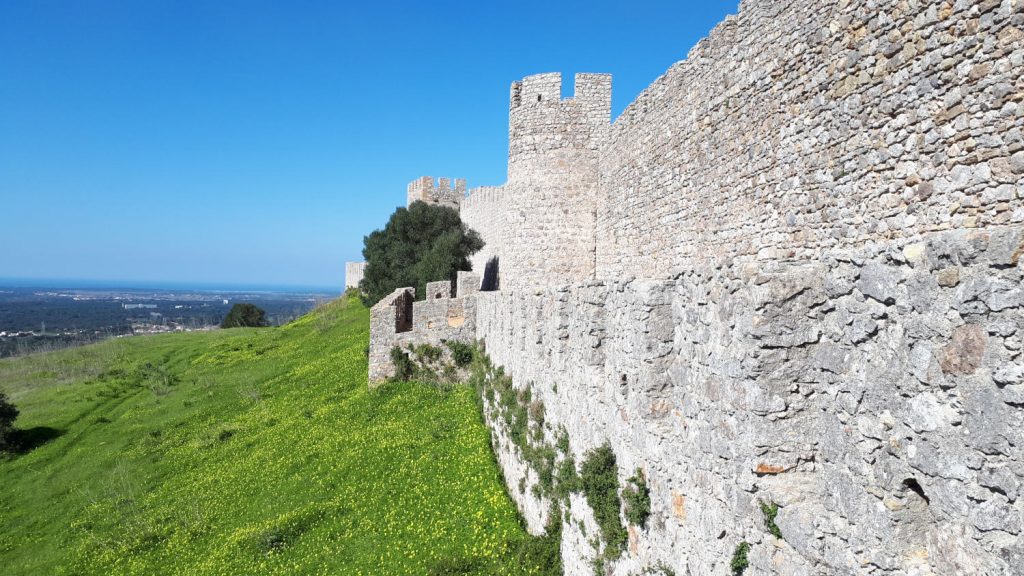
Santiago do Cacem Castle and bank of yellow flowers
It only took about an hour and a half to look around and then we drove up the hill to visit the town’s old windmill, the Moinho de Qinhinha. When we got there it was clear there was no space to park so we carried on past until we came to a layby. Julian decided to pop back just to take a photo while I waited with Buzz. It was quite a few minutes later when I was just starting to wonder where he was when he suddenly appeared with a big grin on his face telling me the mill man had given him a personal tour! Apparently when he told him his wife was waiting the man said ‘that’s ok, she can wait’!
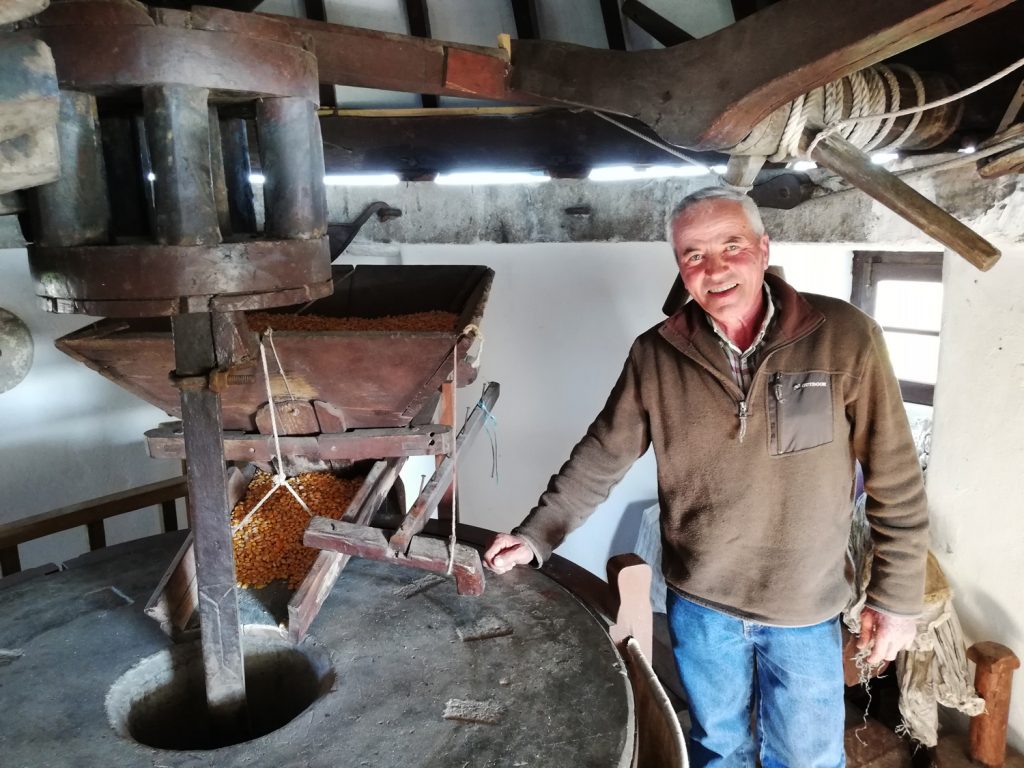
Julian’s personal windmill tour guide!
A bit further on we passed a cork processing site with stacks and stacks of cork piled up outside. Alentejo is home to the largest cork forests in the world and driving on through there were cork forests as far as the eye could see. Portugal is the world’s largest producer of cork, producing about 50% of it – quite amazing for such a small country. We pulled over at one point to take a closer look at the native black Iberian pigs grazing and foraging amongst the trees by the side of the road.
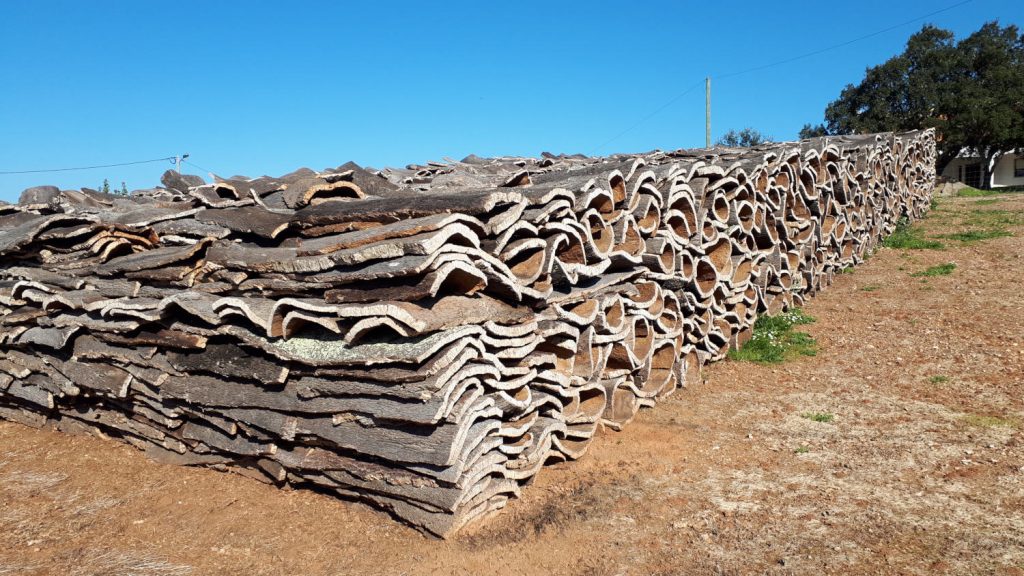
Stacks of cork ready for processing
Late afternoon we arrived at Alcecar do Sal, a picturesque town sloping upwards from the banks of the River Sado. Our parking spot was right by the river with views over the Ponta Pedonal (bridge) with views of the Castelo on the hilltop above. Making the most of what was left of the day’s sun we set off for a walk across the bridge stopping at a riverside bar for an early evening drink . By the time we returned 2 other motorhomes had joined us, with another 2 arriving later. There are no services here, it is just free parking but there are toilets close by and it is right in the town so very conveniently placed.
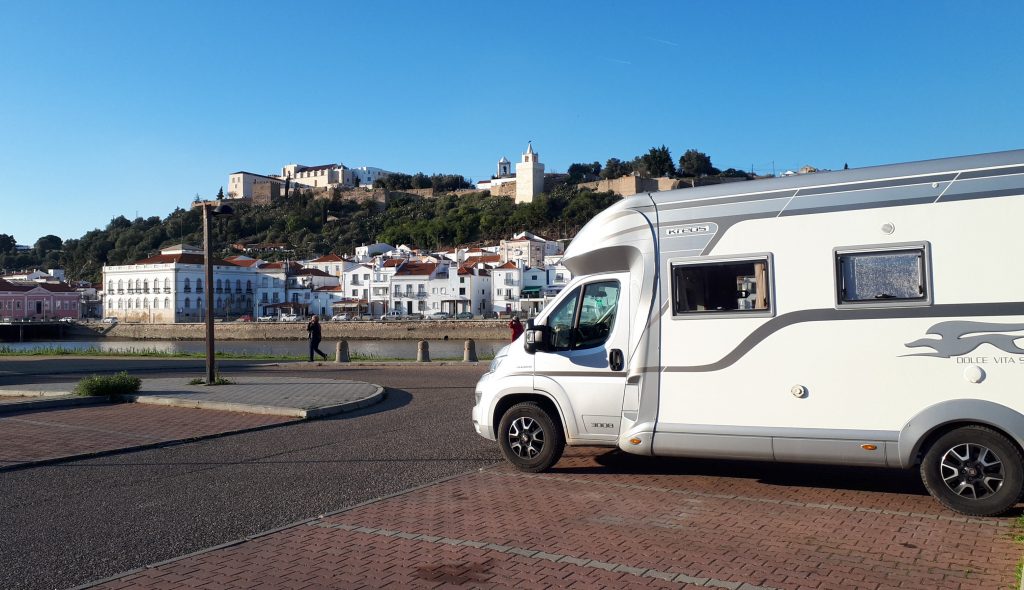
Buzz parked by the river in Alcecar do Sal
The next day was Valentine’s day and it seemed that Cupid had come down in the night and sprinkled the town with love! A big red ‘Amore’ sign had appeared on the bridge and the whole town was covered in red and pink balloons and hearts with music playing in the town square. There was a fun, lively atmosphere and a happy group of young school children were excitedly running around grabbing balloons chanting ‘amor, amor’. We felt quite enamoured with this town (Cupid did a good job!), despite its run down appearance in parts. Many of its buildings hinted at a bygone grandeur with faded fancy facades, chipped azejulos (glazed tiles), crumbling walls and flaking paintwork. All the foundations are there for this town to look beautiful. The metal balustrades, wooden shutters and architectural details are all here. It just needs a cash injection, some repair work and a whole load of paint to restore it to something really captivating.
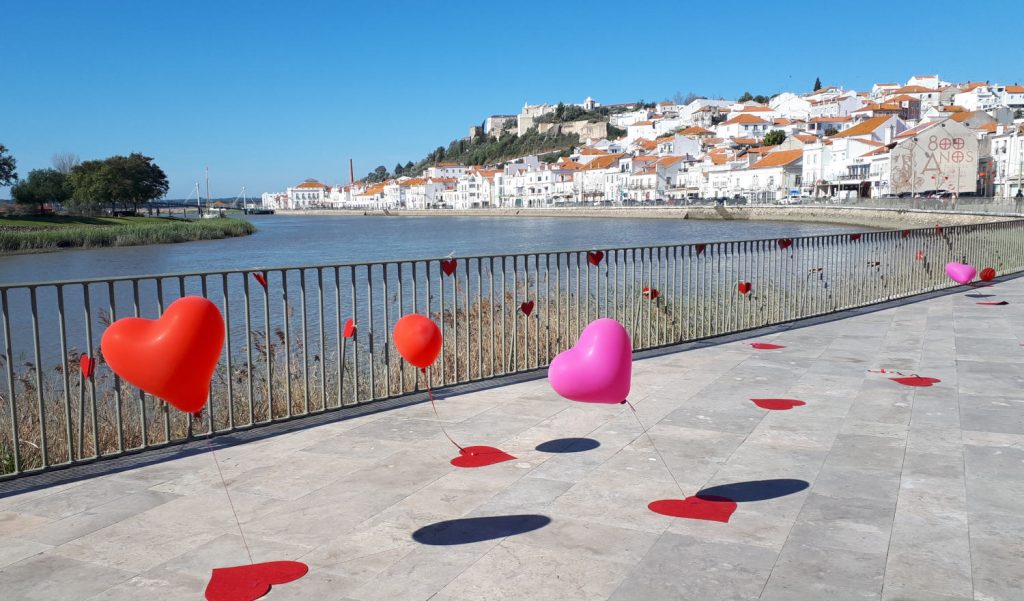
Cupid’s arrow has landed in Alcecar do Sal
We took a coffee break along the promenade trying a regional speciality we’d seen in several bakery windows, Pinhoadas, or sticky pine nut slices. There were indeed very sticky and very sweet. Spurned on by a sugar rush we took the road uphill towards to old castle walls for a view out over the town. There’s an archeological museum and hotel up here too. The views showed the extent of the rice fields below us spreading out in each direction and we also got a great view of Buzz.
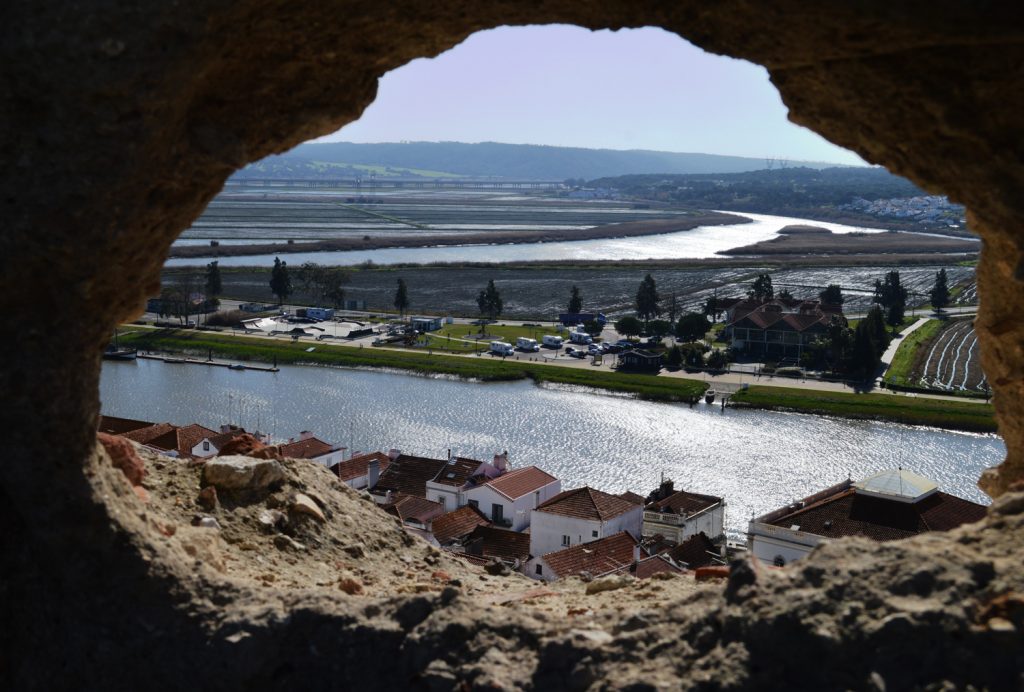
Buzz parked with other motorhomes over the river at Alcecar do Sal – can you spot him?
Deciding to move on for the night we’d seen a dam with small lake nearby which we’d found on Google satellite view. There was also a small restaurant nearby so we set off arriving at Barragem do Pego do Altar to an audience of other motorhomers who seemed to be all lined up in their chairs as if they were waiting for us. They watched our arrival with great interest, so feeling slightly self-conscious we parked up as quickly and with as little fuss as possible taking an easy to access space at the front. With all eyes on us Julian decided to get out and give a bow to his audience, for which he received some smiles and friendly waves. We later got chatting to the British couple behind us who have been coming to this particular spot for the last 20 years, enjoying the setting, peace and tranquility but with easy access back to Alcecar do Sal. They told us that if we walked up the hill to the restaurant we would be well fed. They also told us that over the years they had got a lot of pleasure and fun watching people stumbling back down the hill after sampling the local wine which is apparently a lot stronger than it appears! Recommendation noted, we set off for something to eat a bit later, enjoying a typical simple Portugese dish of grilled pork and chips all washed down nicely with a litre of wine for just 5 euros – yes you read that right, and very nice it was too. Luckily we managed to walk back down without any embarrassing stumbling and made it back to the van dignity intact!


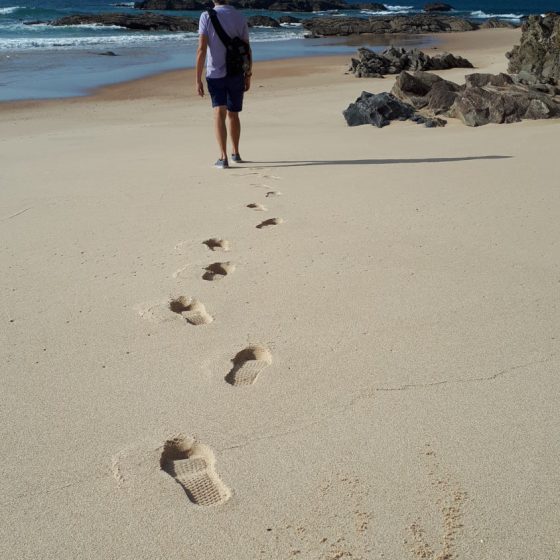
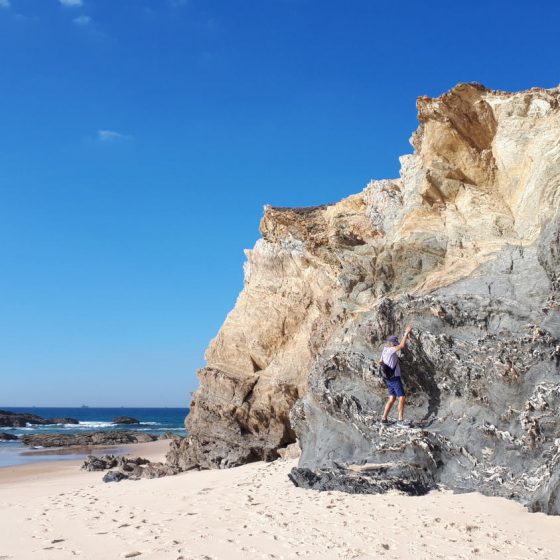
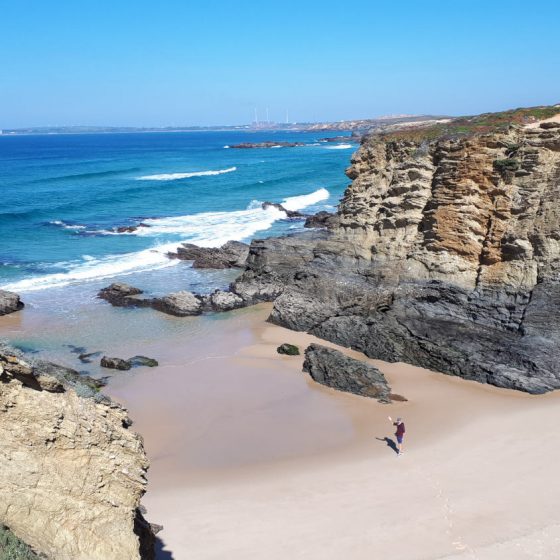
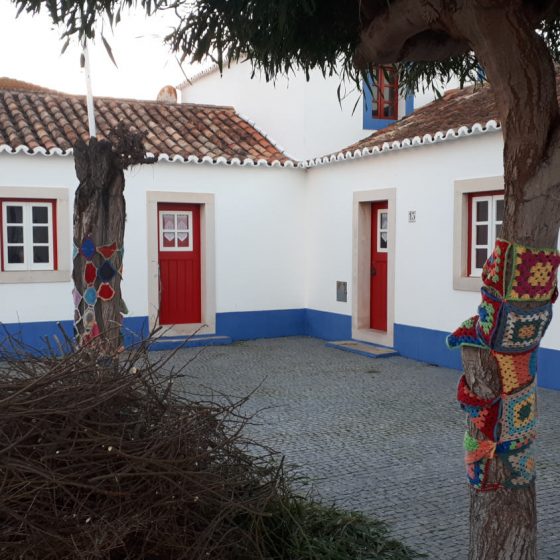
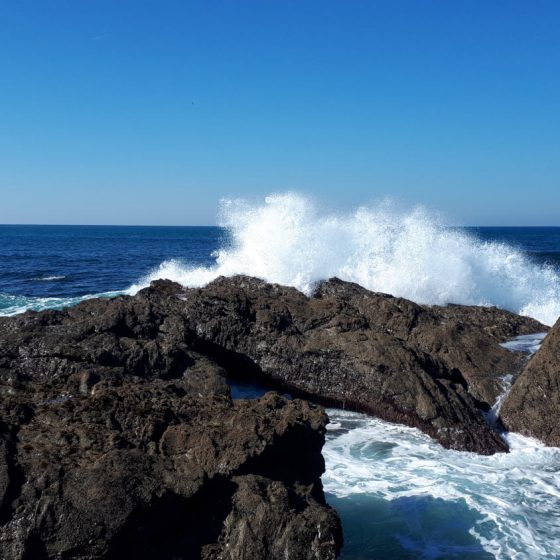
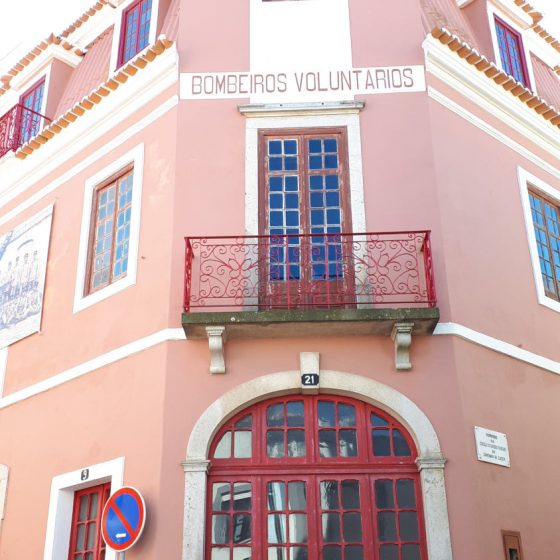
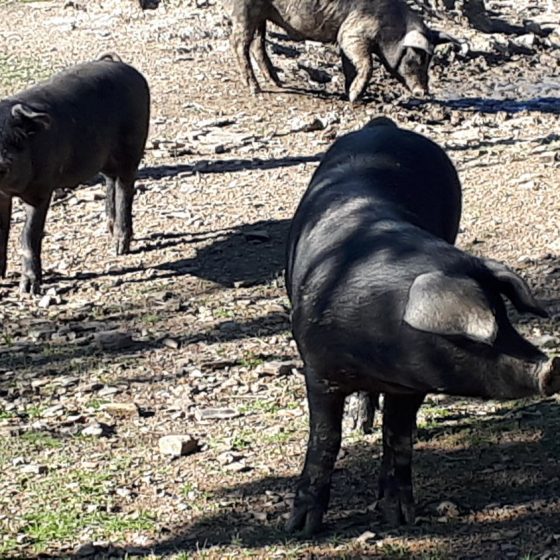
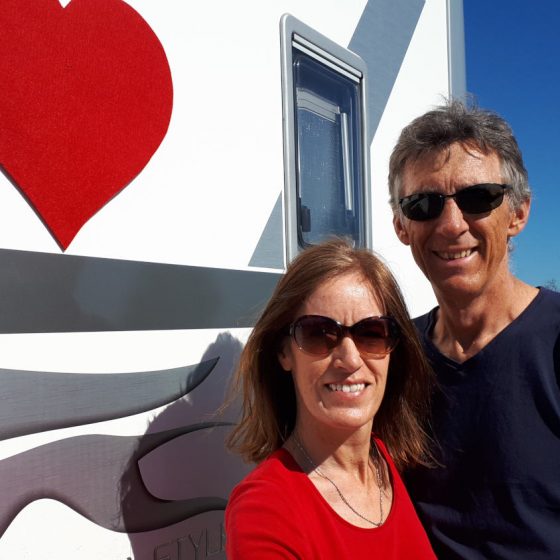
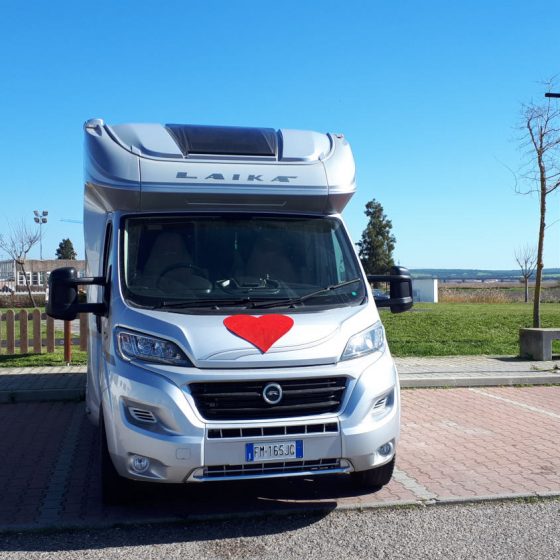
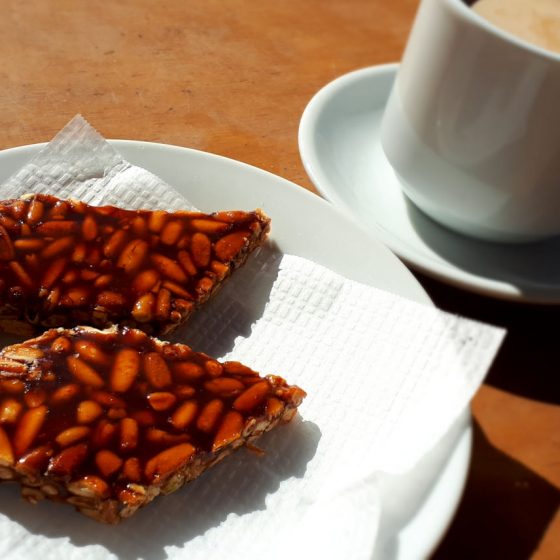
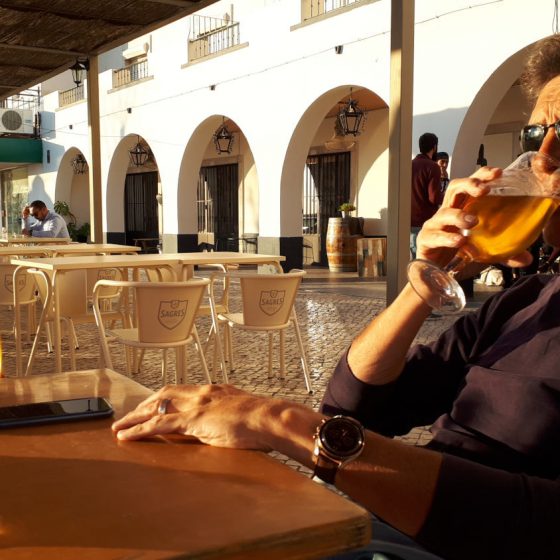
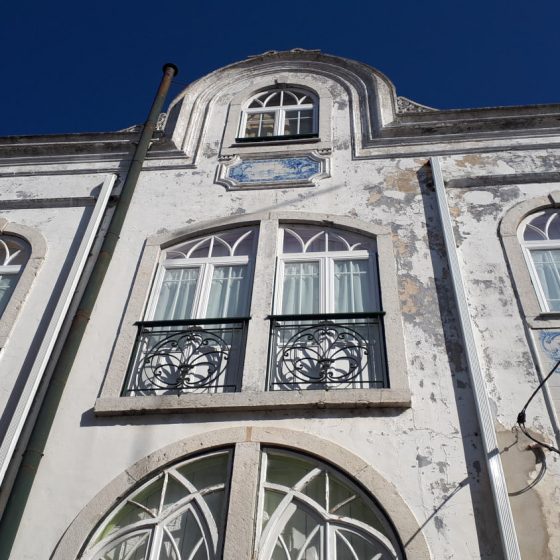
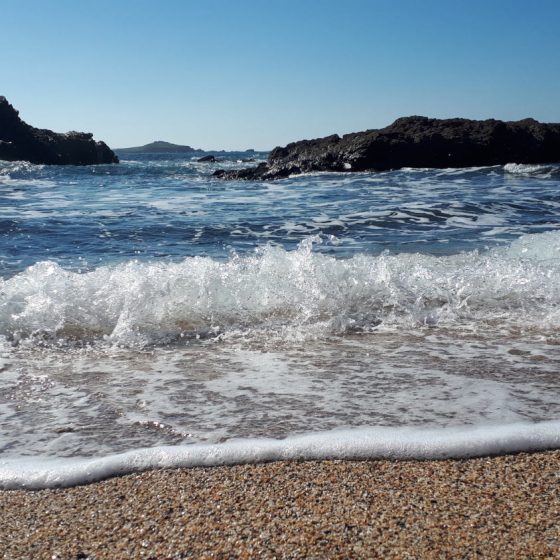
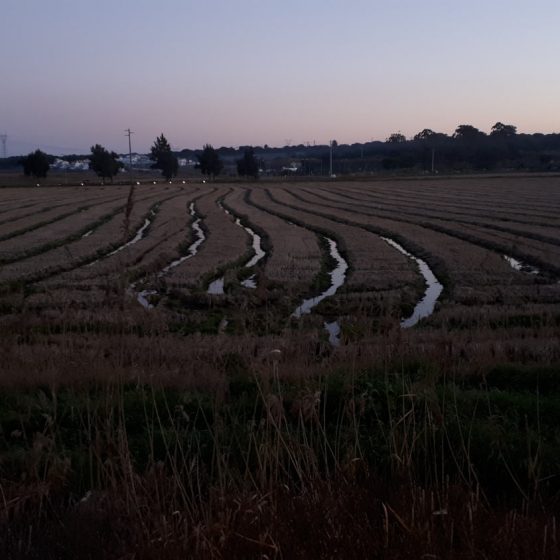
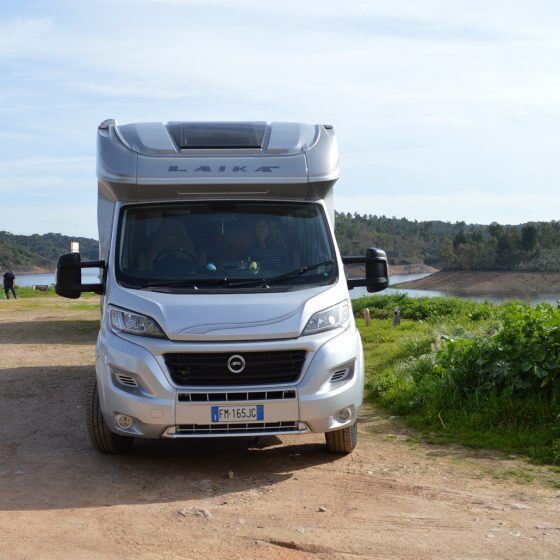
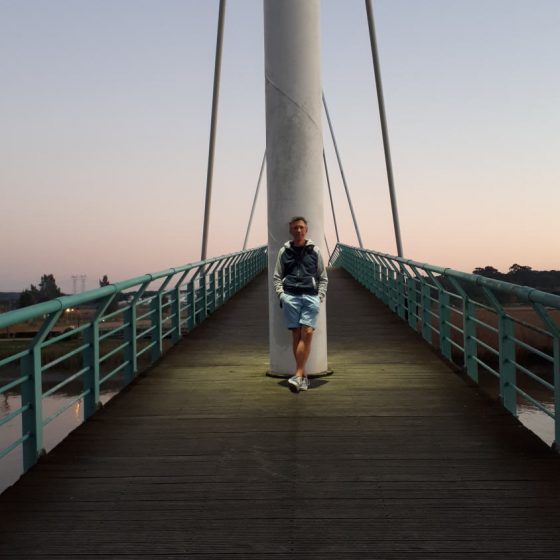
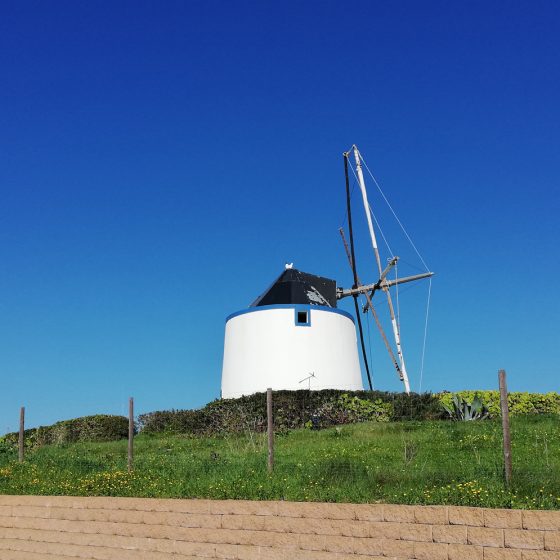
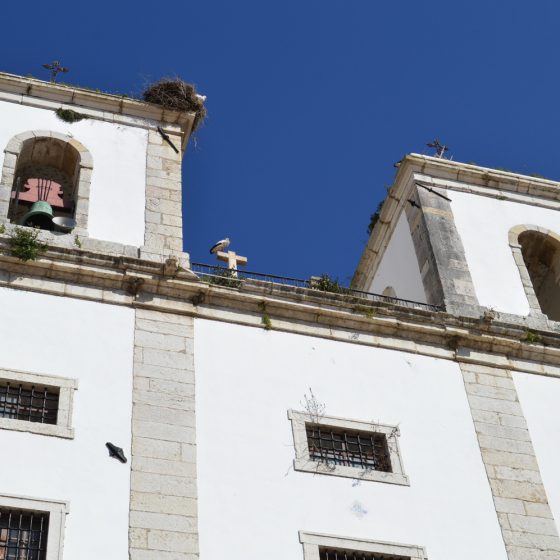
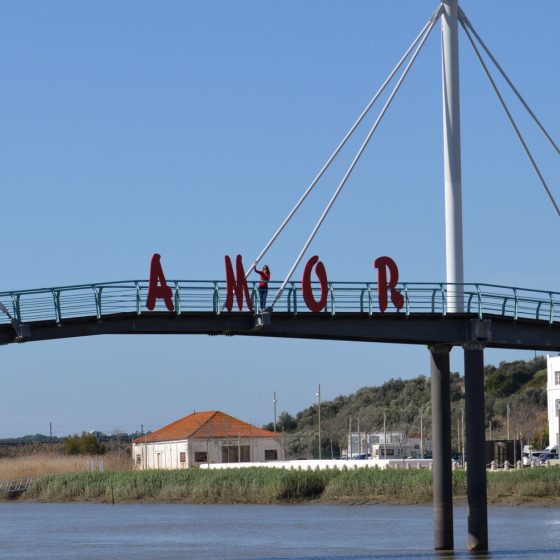
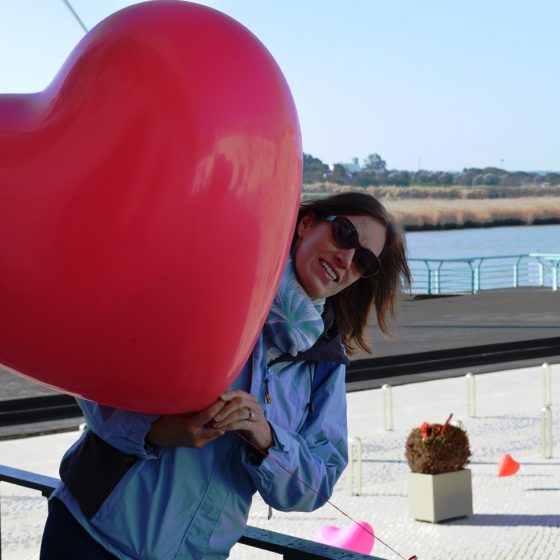
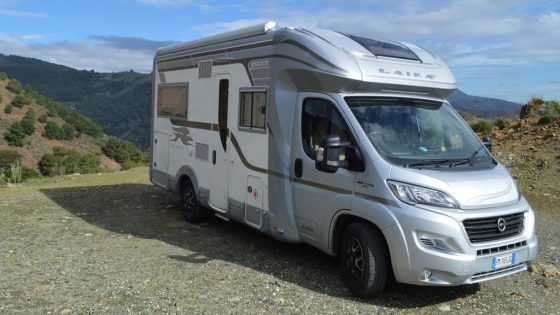
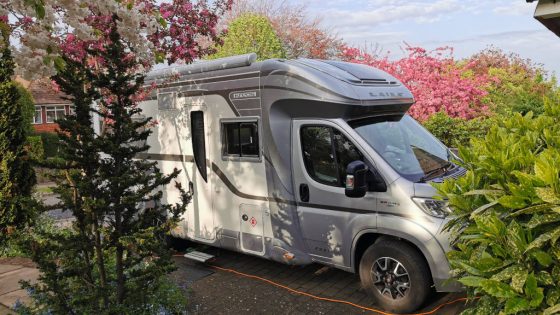
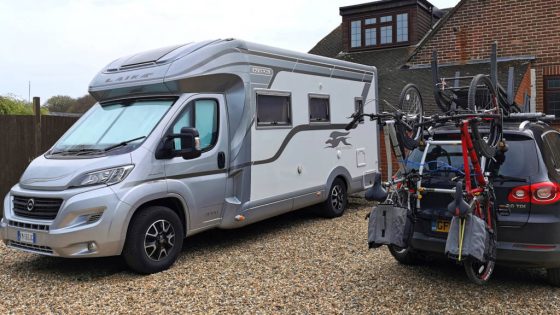
Leave a Reply